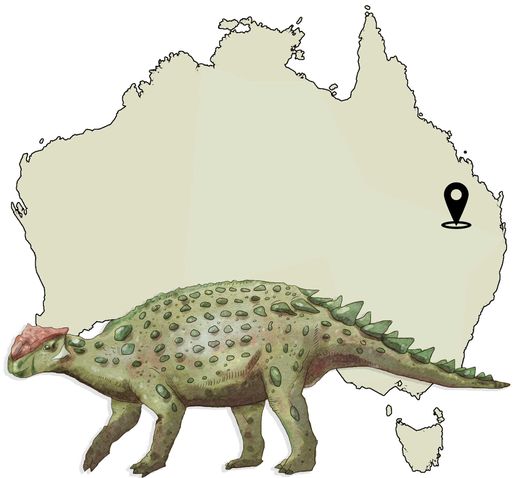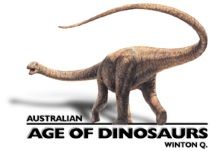Minmi paravertebra

Min-mee pah-rah-vert-eh-brah
Meaning
Minmi [Crossing; refers to the place in which this specimen was mistakenly thought to have been found] with paravertebrae
Period
Early Cretaceous (125–110 Mya)
Discovery and publication
At Roma, Queensland, in 1964, Dr Alan Bartholomai was led by a local to a gully north of Roma, and, sure enough, there were fossilised bones in rock! These were acid-prepared at Queensland Museum in the 1970s, and the bones extracted were named and described by Ralph Molnar in 1980.
Description
The type specimen of Minmi includes 11 vertebrae, parts of at least 14 ribs, some armour, and a partial foot. Although an almost complete skeleton from near Richmond has long been known as Minmi sp., this specimen has since been renamed Kunbarrasaurus ieversi in 2015.
Minmi is an ankylosaur, although it has proven difficult to place on the ankylosaur family tree. Although it was named for what was perceived as a unique feature (i.e. the “paravertebrae” running along the spinal column), this feature has since been shown to have been misinterpreted – the “paravertebrae” are merely ossified tendons, a common feature of ornithischian spinal columns. Consequently, some researchers consider Minmi to be a “nomen dubium” – a doubtful name. However, new research alluded to in a 2015 paper by Lucy Leahey and others (in which they renamed the Richmond ankylosaur Kunbarrasaurus) suggests that Minmi possesses features that allow it to be diagnosed as unique and distinct from other ankylosaurs.
Minmi was a small ankylosaur, 2.5–3m long and less than 1m tall. It appears to have been lightly armoured by ankylosaur standards, with small and large scutes on the back and belly.
